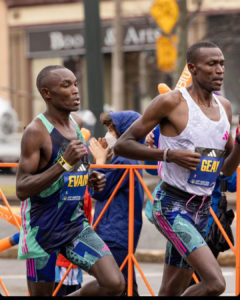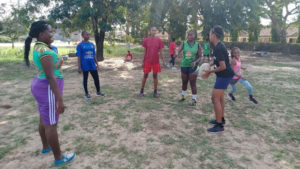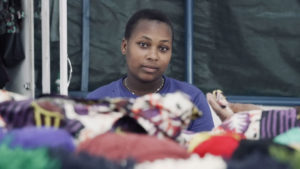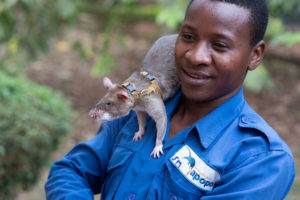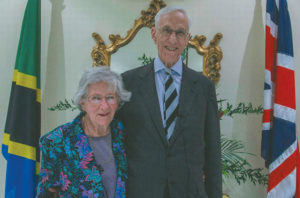by Martin Walsh
RELIGION, POLITICS AND SOCIETY: A PROGRESSIVE PRIMER.
Karim F. Hirji. Daraja Press and Zand Graphics Ltd., Toronto, 2022. 572 pp. (paperback). ISBN: 9781990263125. USD $45.00 (e-book ISBN: 9781990263217. USD $6.99).
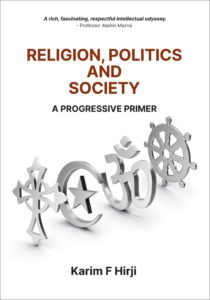
Hirji cover
Karim Hirji is an outstanding mathematician and statistician. He is also a prolific writer about Tanzania.
He was born in Newala in southern Tanzania in 1949, came to Dar es Salaam to go to secondary school, and then studied maths and education at the University of Dar es Salaam – where, in his spare time, he edited the radical magazine Cheche. He then worked in Sumbawanga and Dar es Salaam, obtained Masters degrees at both LSE and Harvard, and enjoyed a successful academic career in the USA, which included identifying a number of false or misleading claims by drug companies. He returned to Dar as Professor of Medical Statistics at Muhimbili University.
He is also a medical miracle. All but a few centimetres of his intestine were removed in an operation in the US, and he survives on a diet of predigested foods and mineral supplements. At times he has been so weak that the only way he could write was by dictating to his wife Farida.
Yet since retiring he has written eight books. Three are the stories of different parts of his life, one is a collection of his writings on education, another is a guide for journalists on how they should use statistics. Another (reviewed in TA 118 in 2017) summarises the work of his mentor Walter Rodney, and especially his book How Europe Underdeveloped Africa. Yet another is a novel about two girls who are very good at maths, one from a poor background, the other better off, who get involved with the Banana Liberation Front (!), and end up in Ukonga Prison where they gain the approval of the governor by teaching other prisoners maths.
His latest book, 468 pages of main text and many more of sources and references, is a presentation and explanation of religions in the world. There are substantial sections on the four religions with the greatest numbers of followers – Hinduism, Buddhism, Islam and Christianity, plus secularism and neoliberalism. He draws on his background as an Ismaili to write about Hinduism and Islam in Africa and other continents. The section on Christianity shows the heavy involvement of the Roman Catholic Church with the CIA and State Department in the USA and their disastrous interventions in Vietnam, Indonesia, Syria, Afghanistan and many countries in Asia, Africa and Latin America, and the close relationship that Trump and his supporters have with evangelical churches, especially Adventists. A section on liberation theology brings out the contribution of theology to leftist individuals such as Paulo Freire, Franz Fanon, and others. The sections on secularism and neoliberalism are, broadly, presented without comment.
The book is a form of political economy. Much of it is put together in blocks of text, making good use the internet – many of these can stand alone outside the main argument of the book, for example nearly twenty pages on the story of Indonesia, and a section on the life of Eleanor Marx.
It is a prodigious achievement to have written something so wide-ranging – a book for the general reader who is asking questions about the world and the way religious thinkers deal with them. It should be on every religious education teacher’s bookshelf and shared with anyone who is overconfident about a particular religion, or looking for a third world perspective. It should be held by libraries in universities which study comparative religion or world history. It is non-judgemental – recognising that there is good in all religions, especially in their early years, but also showing how power corrupts religions once they get into the hands of wealthy capitalists or governments.
There are limitations. An index would make it easier to use the book, and more on Judaism would have enlightened the sections of Islam and Christianity, and the discussion of the situation in Palestine. More credit might have been given to Pope Francis and his reforms of the Roman Catholic Church, and to other reformers in the Dominican and Jesuit orders. It was written before the COVID pandemic and the war in Ukraine and there is little on the climate emergency – these will no doubt be addressed in the promised second volume that will focus on science and scientists and their relations with religious ideas.
It is hard to improve on the following from the promotional material for the book:
“Its foundational premise is that while their spiritual beliefs differ, all humans are equal in dignity and have equal rights. No belief system is more exalted than the rest. There are no chosen people; there is no chosen religion. We all are a part of the global human family. Our religious and cultural diversity is a cause for celebration, not conflict.” If anything, it is more critical of most religions, but Hirji’s underlying sympathy for those who are searching for meaning in the world is not in doubt.
Andrew Coulson.
Andrew worked in the Planning Unit of the Ministry of Agriculture in Dar es Salaam 1967-1971 and taught agricultural economics at the University of Dar es Salaam 1972-76. His edited book African Socialism in Practice: The Tanzanian Experience was published in 1979. Tanzania: A Political Economy followed in 1982, with a second edition in 2013. His most recent book, with Antony Ellman and Emmanuel Mbiha, is Increasing Production from the Land: A Sourcebook on Agriculture for Teachers and Students in Africa (Muki na Nyota, 2018). He was Chair of the Britain Tanzania Society 2015-18.
Social Protection and Informal Workers in Sub-Saharan Africa: Lived Realities and Associational Experiences from Kenya and Tanzania.
Lone Riisgaard, Winnie V. Mitullah, and Nina Torm (editors). Routledge, Abingdon and New York, 2022. 274 pp. (e-book). ISBN: 9781003173694 (free to download from https://www.taylorfrancis.com; print versions can also be purchased).
There has been little research into informal social protection mechanisms in Sub-Saharan Africa and not much is documented about their extent or form, nor, until now, has there been a systematic analysis of how informal workers access any type of social protection.
This book starts with a thorough literature review of how social protection is organised in informal economies, highlighting gaps in the literature, and then provides an overview of the methodology used by the authors of this book. The book continues with chapters written by different authors, exploring how informal workers in different sectors access formal and informal social protection (if at all), examining in detail what people “actually do on the ground” (p. 19). They have taken a comparative approach, examining two countries (Tanzania and Kenya) and three urban sectors prone to informality in those countries. There is a chapter each on transport, micro-trade and construction workers in Tanzania and in Kenya, each following a similar pattern of presenting the findings of the research, and the book finishes with two chapters comparing the sectors and countries and drawing together the threads of the study.
The authors have three specific research questions:
1. Do informal workers or associations offer any kind of informal social protection, what characterises the format of these services, who benefits from them and how do they compare to formal social protection measures?
2. What extent do formal social protection schemes cater for informal workers, and how do informal associations provide access to formal protection schemes?
3. How far are the viewpoints and realities of informal workers represented in institutions?
In both Tanzania and Kenya, the provision of any form of social protection by government or others, including international donors, has been fragmented and inadequate, hampered by the absence of a policy framework with clear institutional roles and responsibilities, and an overall plan. At the same time, there has been a lack of capacity and financial resources at government and civil society level to implement the necessary measures. There are also challenges which make it difficult to put into place a system of social protection for informal workers – workers must make contributions from their extremely limited income, and due to a lack of understanding and information, but also experiences of previous schemes and a suspicion that any subsequent initiative will turn out the same, many will not choose to take part in such schemes. The limitations of social protection for informal construction workers are summed up by a Kenyan contractor: “we pray to God so that a bad incident does not occur” (p. 216). Several of the papers analyse the reasons for poor uptake of various forms of social protection.
However, the authors find that in recent years there has been a move towards more coherent social protection, and this includes the extension of coverage to informal workers. Indeed, many see that social protection is a potential solution to issues of poverty.
There is much discussion about associations, including the relationship between membership of associations and access to more formal social protection. It is concluded that social dynamics among members make associations a much stronger means of social protection than programmes which come from government. Many of these associations are savings and credit societies, where trust around financial matters has been built up. In addition, associational power is able to advance the interests and conditions of informal workers. One association member in Dar es Salaam said: “We have one hope only, and that is our associations. That is why we call our group ‘Our Hope’” (p. 184). But the associations themselves may be weak, with poor leadership, and inadequate training, so many challenges remain.
The book provides a comprehensive study of the subject, with plenty of data from both countries, and the authors have clearly spoken to a wide range of informants. In my experiences with people working on the margins of the economy in Tanzania, those mostly without a voice, I have found people to be coherent in their analysis of their own situations and I was glad to find in several of the papers quite extensive quotes of the actual words of some of the interviewees, vividly explaining how difficult their situation is, or why the attempts of various bodies to increase social protection has failed. In presenting this information, this book has gone some way to giving these informal workers a voice.
Kate Forrester.
Kate lived in Tanzania for 15 years, working as a freelance consultant chiefly in social development, and carrying out research assignments throughout the country. She now lives in Dorchester, where she is active in community and environmental work.
Also noticed:
THE EASTAFRICA CAMPAIGN 1914-18: VON LETTOW-VORBECK’S MASTERPIECE. David Smith (illustrated by Graham Turner). Osprey Publishing, Oxford, 2022. 96 pp. (paperback). ISBN: 9781472848918. £15.99 (e-book £12.79).
The publisher describes this book as a “beautifully illustrated study of the daring war in East Africa waged by German colonial forces under Paul von Lettow-Vorbeck against the wide array of colonial and expeditionary forces of the Allied Powers.” The blurb continues:
“The East African Campaign in World War I comprised a series of battles and guerrilla actions which began in German East Africa in 1914 and spread to portions of Portuguese Mozambique, northern Rhodesia, British East Africa, the Uganda Protectorate, and the Belgian Congo. German colonial forces under Lieutenant-Colonel Paul von Lettow-Vorbeck attempt to divert Allied forces from the Western Front. Despite the efforts of the Allied forces, LettowVorbeck’s troops remained undefeated at the end of the war.
In this fascinating work, David Smith documents how a wide array of British, Indian, South African, Belgian, Portuguese and local native forces invaded German East Africa and slowly ousted the German forces, a process made tortuous by Lettow-Vorbeck’s masterful management of the campaign. Among the events covered in this work are the Battle of Tanga, the scuttling of the Königsberg, the German railway campaign, and the battles at Salaita Hill, Kondoa-Irangi, Mahenge, Mahiwa and Namacurra. Colourful period and specially commissioned illustrations bring to life a wide-ranging and eventful campaign in which a high price was extracted for every inch of ground given up.”
The period photographs are of course in black and white, but there is plenty of colour in the maps, plans and drawings provided by Graham Turner. While this is not presented as a work of academic scholarship, David Smith is an experienced military historian, and his well-informed account will be of interest to a wide audience, not least admirers of von Lettow-Vorbeck’s extraordinary guerrilla campaign.
IMPERIAL POWERS AND HUMANITARIAN INTERVENTIONS: THE ZANZIBAR SULTANATE, BRITAIN, AND FRANCE IN THE INDIAN OCEAN, 1862-1905. Raphaël Cheriau. Routledge, Abingdon and New York, 2021. 270 pp. (e-book). ISBN: 9780429323232. £29.59 (also available in print formats).
This book will likely be of interest mainly to specialists in Indian Ocean and imperial history, and indeed Routledge have included it in their ‘Empires in Perspective’ series. Their short description (reproduced below) is short and not particularly illuminating. Readers wanting more information may like to consult the list of contents provided by the publisher, or seek out Edward Alpers’ review on the website of the Australian Institute of International Affairs (https://www.internationalaffairs.org.au/).
“In the second half of the nineteenth century, the Zanzibar Sultanate became the focal point of European imperial and humanitarian policies, most notably Britain, France, and Germany. In fact, the Sultanate was one of the few places in the world where humanitarianism and imperialism met in the most obvious fashion. This crucial encounter was perfectly embodied by the iconic meeting of Dr. Livingstone and Henry Morton Stanley in 1871. This book challenges the common presumption that those humanitarian concerns only served to conceal vile colonial interests. It brings the repression of the East African slave trade at sea and the expansion of empires into a new light in comparing French and British archives for the first time.”
Martin Walsh
